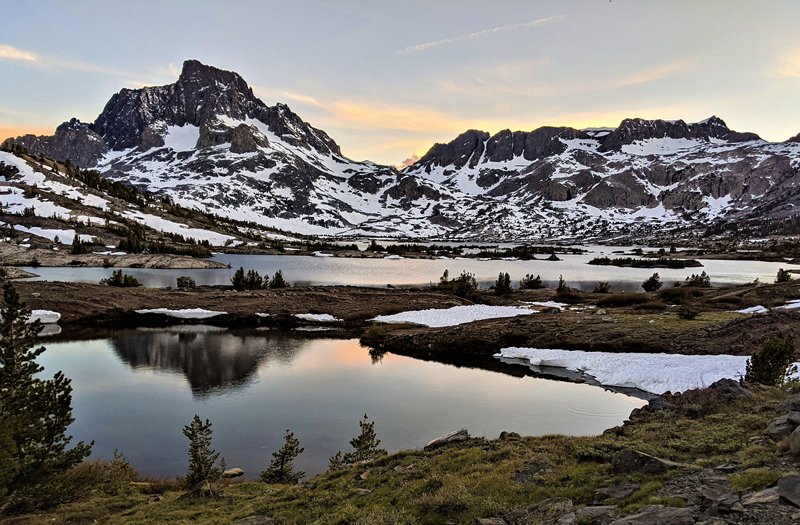
Sign up for daily news updates from CleanTechnica on email. Or follow us on Google News!
Humans store water in huge metal towers and deep concrete reservoirs. But nature’s water storage is much more scenic – the snowpack that tops majestic mountains. Even if we don’t realize it, humans rely on those natural water towers just as much if not more than the ones we build. When the spring rains and summer sun melt this snowpack, it flows downhill to thirsty landscapes and humans. It provides water when precipitation is at its lowest and refills natural and built reservoirs. About a quarter of the world relies on the water stored in mountains.
But climate change is putting this cycle at risk. Warmer temperatures shrink the existing snowpack and produce storms that dump more rain instead of snow. The average global temperature has already increased by 1.9 degrees F since pre-industrial times. With that shift, scientists have seen more than a 20 percent decline in the amount of water stored in snowpack in the Western U.S. compared to the 1950s. That’s the same as the entire volume of Lake Mead.
Researchers from seven different institutions supported by the Department of Energy’s Office of Science (including Lawrence Berkeley National Laboratory) are using powerful computer models to calculate how much climate change will affect snowpack in the future. They’ve found that 4.5 degrees F (2.5 degrees C) of warming above pre-industrial levels is likely to cause many mountainous areas to experience low-to-no snow years more than 10 years in a row. During these seasons, there is 10 percent less runoff each year than there would be otherwise. This 10 percent is essential for water supplies when precipitation is low. It’s especially needed in times of drought, which are also more likely due to climate change. This increase in temperature could come about if a “high emissions scenario” occurs where the world continues burning large amounts of fossil fuels.
The impacts won’t be the same across the globe though.
In North and South America, climate change is going to hit the southern midlatitudes the hardest. This area includes Chile and Argentina. At the high emissions scenario, people in these areas could have consistent low-to-no snow seasons as early as 2046. That’s only 23 years from now. This impact could be particularly devastating in the Chilean Andes. Much like California, this area is a major agricultural hub and has been going through a very long drought.
The prediction that the mountains in South America would be hit harder surprised the researchers. They expected this region’s high altitude would make it more resilient. This result shows how much climate changes’ impacts vary – depending on an area’s geography and ecosystems.
The mountains in North America would feel major effects as well, just later than the South American ones. The Sierra Nevada Mountains in California could face a similar fate 35 to 60 years from now.
Fortunately, we are able to understand these potential futures and prevent them. To make these predictions, scientists run scenarios based on different levels of greenhouse gas emissions. They use simulations called Earth systems models that include many different parts of the climate system that shape the global environment. These models help us predict what the impacts will be for each additional degree of warming. The models are so complex that the scientists used supercomputers at the National Energy Research Scientific Computing Center (NERSC), an Office of Science user facility.
With this knowledge, we can work to reduce greenhouse gas emissions and make adaptations to minimize the impacts that are already happening. The DOE’s Energy Earthshots are working to develop new, innovative technologies to eliminate our need for fossil fuels. The DOE Office of Science’s HyperFACETS program and urban integrated field laboratories are connecting scientists with people in communities to help them make decisions based on current research.
Water is essential to every person and ecosystem on our planet. With scientific research, we can better understand water systems, reduce our effects on them, and help communities be more resilient in the face of these changes.
Article from U.S. DOE. By Shannon Brescher Shea.
Have a tip for CleanTechnica? Want to advertise? Want to suggest a guest for our CleanTech Talk podcast? Contact us here.
Our Latest EVObsession Video
[embedded content]
I don’t like paywalls. You don’t like paywalls. Who likes paywalls? Here at CleanTechnica, we implemented a limited paywall for a while, but it always felt wrong — and it was always tough to decide what we should put behind there. In theory, your most exclusive and best content goes behind a paywall. But then fewer people read it!! So, we’ve decided to completely nix paywalls here at CleanTechnica. But…
Thank you!
Advertisement
CleanTechnica uses affiliate links. See our policy here.
- SEO Powered Content & PR Distribution. Get Amplified Today.
- PlatoData.Network Vertical Generative Ai. Empower Yourself. Access Here.
- PlatoAiStream. Web3 Intelligence. Knowledge Amplified. Access Here.
- PlatoESG. Carbon, CleanTech, Energy, Environment, Solar, Waste Management. Access Here.
- PlatoHealth. Biotech and Clinical Trials Intelligence. Access Here.
- Source: https://cleantechnica.com/2024/01/12/snow-capped-mountains-at-risk-from-climate-change/



